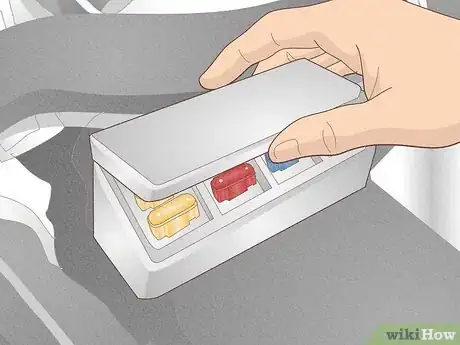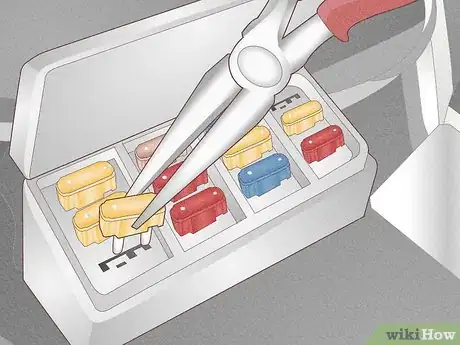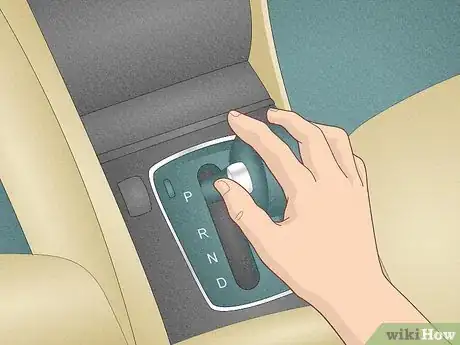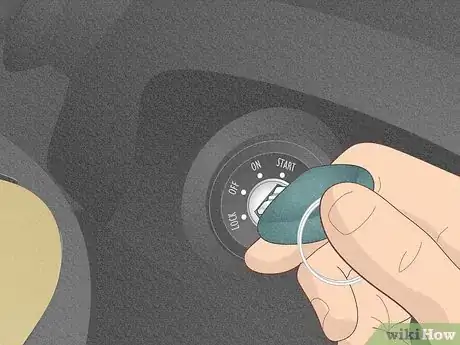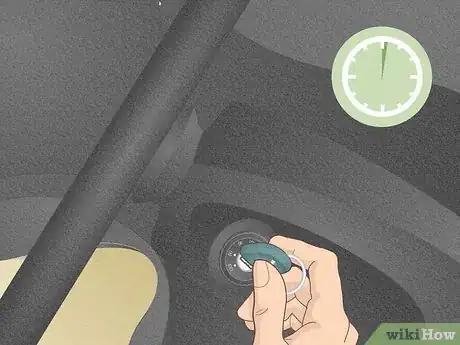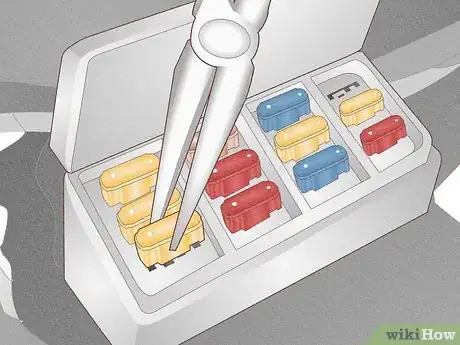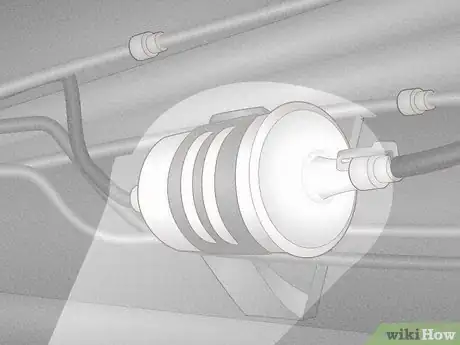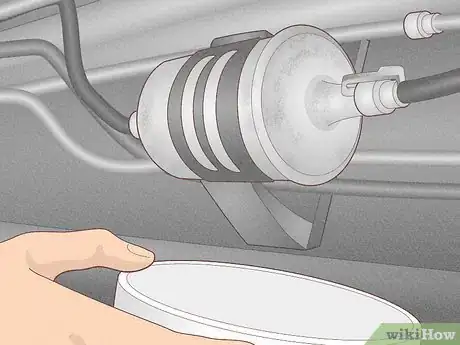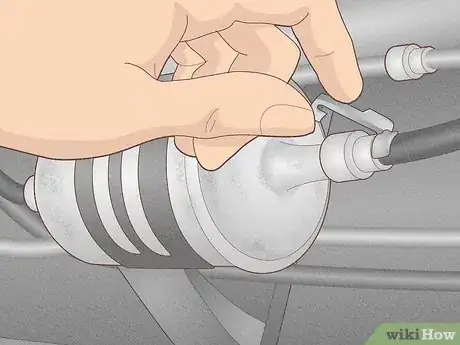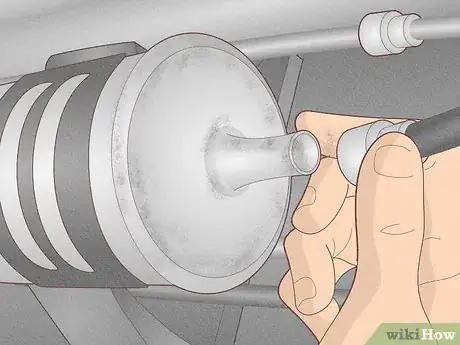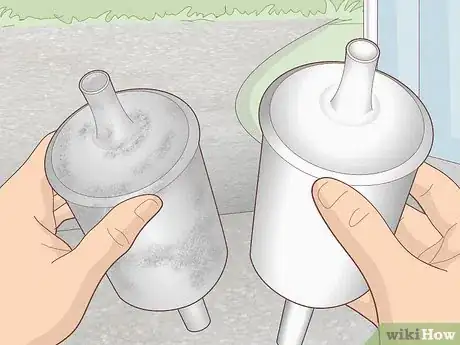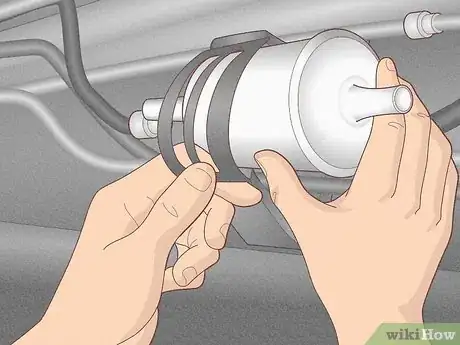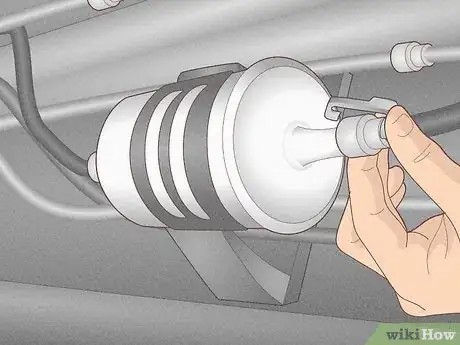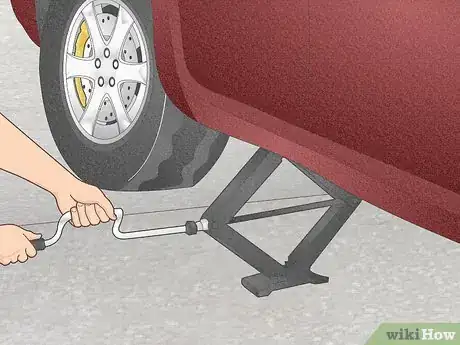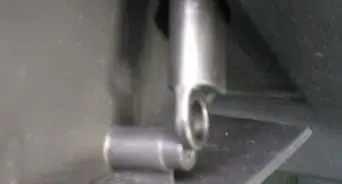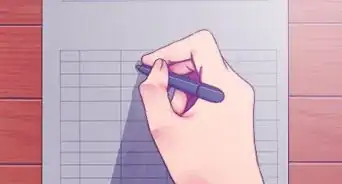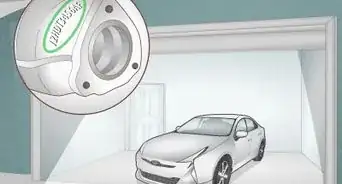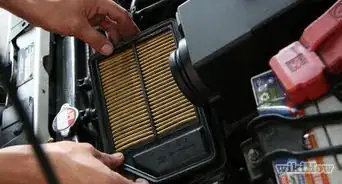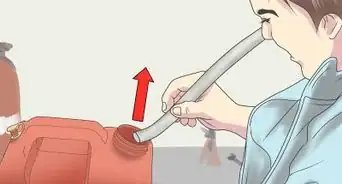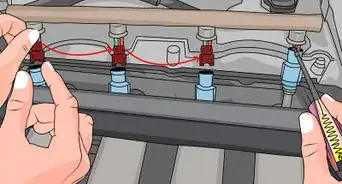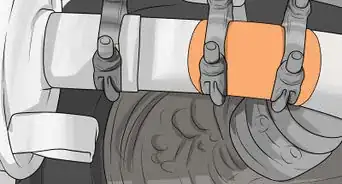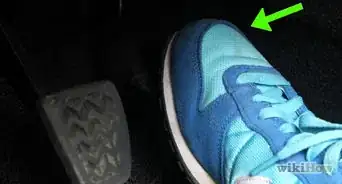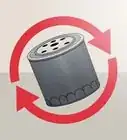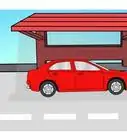This article was co-authored by Duston Maynes. Duston Maynes is an Automotive Repair Specialist at RepairSmith. Duston specializes in leading a team that handles a variety of automotive repairs including replacing spark plugs, front and rear brake pads, fuel pumps, car batteries, alternators, timing belts, and starter motors. Duston holds an Associate’s degree in Automotive/Diesel Technology from The Universal Technical Institute of Arizona and is a Certified Diagnostic Technician and Automobile Mechanics Technician through BMW STEP. RepairSmith received The 2020 Big Innovation Award by Business Intelligence Group and The Startup of the Year by the American Business Awards. RepairSmith was also included in Built in LA’s 50 Startups to Watch and The Business Intelligence Group’s 52 Names Leading the Way in Customer Service. RepairSmith offers in-home services to provide car owners convenient and complete auto repair everywhere.
There are 7 references cited in this article, which can be found at the bottom of the page.
This article has been viewed 271,913 times.
Changing the fuel filter is a part of regular maintenance. Keeping your fuel system properly maintained by changing the fuel filter prolongs the life of the fuel pump. Dirt in the fuel is captured by the filter which clogs over time, causing it to operate less efficiently. The clogged filter reduces fuel pressure and volume in the fuel system. If your vehicle is losing power, it could be a sign of a clogged fuel filter. Replace the filter at the manufacturer’s recommended interval.
Note: This guide applies to gasoline engine vehicles only. The fuel filters in diesel cars and trucks are usually much larger, and the whole fuel system is much more complex. Diesel engine fuel systems are also under a lot more pressure, with modern common rail systems producing over 1000 bar of pressure. Accidentally releasing such high pressure could result in injury.
Steps
Relieving the Pressure in the Fuel System
-
1Locate your vehicle’s fuse box. In order to relieve the pressure in your fuel system, you will need to run the vehicle without the fuel pump functioning for a short time. In order to prevent the fuel pump from turning on with the engine, you will need to locate the fuse box that contains the fuel pump fuse. Most vehicles have a fuse box both in the interior of the car as well as under the hood. Refer to your vehicle’s owner’s manual to locate the appropriate fuse box.[1]
- If you do not have an owner’s manual, try referring to the auto maker’s website.
- The fuse for the fuel pump is often in the fuse box locating in the interior of the vehicle.
-
2Remove the fuse for the fuel pump. Once you have located the correct fuse box, use the diagram provided on the fuse box cover or in the owner’s manual to identify the fuse that powers the fuel pump. Use a pair of needle nose pliers or plastic tweezers to remove the fuse.[2]
- With the fuse removed, the fuel pump will not function when you start the engine.
- There is still fuel and pressure in the fuel lines running from the rear to the front of the vehicle.
- Check the auto maker’s website for a fuse diagram if you do not have one.
Advertisement -
3Ensure the vehicle is not in gear. Although the engine will not be receiving a fresh supply of fuel from the gas tank, there will be enough fuel left in the lines for it to start and run briefly. Make sure automatic vehicles are in park and vehicles equipped with a standard transmission are in neutral with the parking brake engaged.[3]
- Although the vehicle will only run briefly, it will still move if left in gear.
- Be sure the parking brake is engaged if you are in a standard vehicle. The parking brake is optional but advised for automatics.
-
4Start the engine. Insert the key into the ignition and turn it to start the motor just as you would any other time. The engine should start easily as it expends the fuel remaining in the fuel system past the fuel pump.[4]
- If the engine turns over but then sputters out, it may not have had sufficient pressure in the lines to force the fuel into the engine.
- If the engine dies, the fuel pressure will be sufficiently relieved.
-
5Allow the engine to run for a minute before shutting it off. Depending on the fuel system in your vehicle and its average fuel consumption, the amount of time it will run without a functioning fuel pump can vary greatly. It does not need to run until it dies, however. Instead just allow it to run for a minute or two before turning the key back to off.[5]
- Without the fuel pump functioning, the pressure will be relieved in the fuel lines fairly quickly.
- Allowing the engine to run until it dies may make it difficult to start it again.
-
6Re-insert the fuel pump fuse. With the pressure relieved from the fuel system and the engine off, you can re-insert the fuse that powers the fuel pump. Place the cover back on the fuse box and return any pieces of the trim you may have needed to remove to access it.[6]
- Make sure the vehicle is off before replacing the fuse you removed.
- Do not start the engine again after inserting the fuel pump fuse.
Removing the Old Fuel Filter
-
1Disconnect the battery. Now that there is no reason for the engine to be started again until the project is complete, you should disconnect the negative terminal on the battery. Removing the cable from the negative terminal will prevent the engine from being started while you work. You will need to use a hand or socket wrench to loosen the nut holding the cable onto the negative terminal, but you will not need to remove the nut completely.[7]
- Disconnecting the battery will ensure the engine cannot be started during the remainder of this project.
- Tuck the negative cable to the side of the battery to ensure it doesn’t accidentally come into contact with its terminal on the battery.
-
2Locate the fuel filter. There are two common locations fuel filters are mounted in vehicles, so you should refer to your vehicle’s service manual to help you determine which place to look.[8] The most common location for modern vehicles is along the fuel line on the bottom of the car, just past the fuel pump. In some vehicles, the fuel filter is located in the engine bay on the line that leads to the fuel rail.[9]
- Some vehicles may place the fuel filter in a different location, so refer to your service manual to find out for sure.[10]
- You may need to access the fuel filter from inside the cabin of some vehicles.
-
3Jack up the car if necessary. If the fuel filter is located on the underside of your vehicle, you will need to jack up the car to access it. Slide the jack under the car at one of its designated jack points, then either pump or twist the handle to raise the vehicle (depending on the style of jack).[11]
- Once the vehicle is jacked up, place jack stands beneath it before working under the vehicle.
- Never rely on a jack to support the weight of a vehicle you are beneath while working.
-
4Place a bowl or bucket beneath the fuel filter. Although you relieved the pressure in the fuel line, there may be a bit of fuel left in the line that can spill out when disconnected from the fuel filter. Place a bowl or bucket beneath the fuel filter to catch any fuel that drips or pours out.[12]
- Do not mix the fuel with oil or coolant to be recycled. Gasoline should be held in its own container until it can be dropped off to a recycling location.
- Be careful of using plastic containers to hold gas, as it may eat through some kinds of plastic and cause a leak.
-
5Remove the clips holding the fuel filter in place. Most fuel filters are held in place by two plastic clips. Locate the clips on either side of the cylindrical fuel filter, then use a flat head screwdriver to pop them out of the holes they are in. These clips may break as you remove them, so purchasing replacement clips along with your fuel filter is advised.[13]
- The clips that hold the fuel filter in place are made of thin plastic and tend to break easily. If you are able to remove them without them breaking, they may be reused.
- You can purchase replacement fuel filter clips at your local auto parts store.
-
6Remove the fuel lines from the filter. With the clips removed, slide the fuel lines away from the filter to pop them off of the nozzles on either end. Make sure to tip the fuel lines toward the bowl or bucket in place as you remove them to catch any spilled gasoline. [14]
- You should wear eye protection and gloves during this portion of the project to protect you from fuel splatter.
- Do your best to avoid allowing any gas to pour out onto the ground.
-
7Slide the fuel filter out of its bracket. The fuel filter is likely held in place by a metal bracket that wraps around its outer housing. With the fuel lines disconnected, you can slide the fuel filter out of the bracket by pushing it toward the front of the car. The fuel filter will have a slight bell shape, allowing it to slide out in only one direction.[15]
- If your filter sits in the bracket differently, you may need to slide it toward the back of the car to remove it.
- Some fuel filters under the hood may he held in the bracket with a bolt that will need to be removed to slide the filter out.
Installing a New Fuel Filter
-
1Compare the new filter to the old one. When less fuel can pass through the filter, it is time to change it.[16] Before installing the new fuel filter, compare it to the one you just removed. Make sure they appear to be the same outside diameter, that the nozzles are the same size, and that it will fit into the bracket.[17]
- If the fuel filters do not match, you will need to return the new one for the correct replacement filter.
- Do not attempt to use a fuel filter for a different application in your vehicle, as it may not be capable of allowing the appropriate volume of fuel to pass through it.
-
2Slide the new fuel filter into the bracket. The new fuel filter should easily slide into its bracket. If you have to force it, it is likely not the correct diameter. The fuel filter should stop when it is seated properly, as it should only be able to slide all the way out in one direction.[18]
- Be careful not to damage the housing of the fuel filter, as that may cause a leak.
- If you find yourself pushing hard on the filter to make it fit, it is likely not the correct one.
-
3Fasten the fuel filter to the fuel line. Slide the fuel lines onto the front and back of the filter the same way they were attached to the old one. With the fuel line in place on the filter, slide the plastic clips through the holes on the fuel line nozzle to secure the line in place on the fuel filter.[19]
- If the plastic clip breaks as you slide it in, do not attempt to drive the vehicle until you replace the broken clip.
- Make sure the fuel lines are snug on the nozzles of the fuel filter before sliding the clips into place.
-
4Lower the vehicle off of the jack stands. Jack up the car to relieve the weight on the jack stands, then slide them out from beneath the vehicle. Once the jack stands are clear, lower the vehicle to the ground by either releasing the pressure in the jack or turning the jack handle counter-clockwise, depending on your style of jack.[20]
- Be sure the jack stands are completely out of the way, otherwise they may damage the vehicle if lowered onto them.
- Once the vehicle is safely on the ground, reconnect the battery to complete the project.
Expert Q&A
-
QuestionHow do I know if my fuel filter needs changing?
 Ed BeeryEd Beery is an Automotive Specialist and the Owner of InTechgrity Automotive Excellence based in Denver, Colorado. With more than eight years of experience, he specializes in providing maintenance and repair services for both individuals and companies. Ed and the InTechgrity Automotive Excellence Team are approved by the American Automobile Association (AAA) for repairs and are Automotive Service Excellence (ASE) certified.
Ed BeeryEd Beery is an Automotive Specialist and the Owner of InTechgrity Automotive Excellence based in Denver, Colorado. With more than eight years of experience, he specializes in providing maintenance and repair services for both individuals and companies. Ed and the InTechgrity Automotive Excellence Team are approved by the American Automobile Association (AAA) for repairs and are Automotive Service Excellence (ASE) certified.
Automotive Specialist Do a fuel pressure test to determine if enough fuel is being pushed through the system. Plus, you should always change your filter if it's clogged or leaking.
Do a fuel pressure test to determine if enough fuel is being pushed through the system. Plus, you should always change your filter if it's clogged or leaking. -
QuestionIs there a difference in fuel filters?
 Ed BeeryEd Beery is an Automotive Specialist and the Owner of InTechgrity Automotive Excellence based in Denver, Colorado. With more than eight years of experience, he specializes in providing maintenance and repair services for both individuals and companies. Ed and the InTechgrity Automotive Excellence Team are approved by the American Automobile Association (AAA) for repairs and are Automotive Service Excellence (ASE) certified.
Ed BeeryEd Beery is an Automotive Specialist and the Owner of InTechgrity Automotive Excellence based in Denver, Colorado. With more than eight years of experience, he specializes in providing maintenance and repair services for both individuals and companies. Ed and the InTechgrity Automotive Excellence Team are approved by the American Automobile Association (AAA) for repairs and are Automotive Service Excellence (ASE) certified.
Automotive Specialist Some fuel filters are canister type, with a filter that fits into a canister. These can be easily inspected—if the canister filter is clearly dirty, just replace it. Other filters are closed, meaning they can't be inspected for dirt. Leakage, time, mileage, and vehicle performance should guide when to replace this type of filter.
Some fuel filters are canister type, with a filter that fits into a canister. These can be easily inspected—if the canister filter is clearly dirty, just replace it. Other filters are closed, meaning they can't be inspected for dirt. Leakage, time, mileage, and vehicle performance should guide when to replace this type of filter. -
QuestionCan I replace my own fuel filter?
 Ed BeeryEd Beery is an Automotive Specialist and the Owner of InTechgrity Automotive Excellence based in Denver, Colorado. With more than eight years of experience, he specializes in providing maintenance and repair services for both individuals and companies. Ed and the InTechgrity Automotive Excellence Team are approved by the American Automobile Association (AAA) for repairs and are Automotive Service Excellence (ASE) certified.
Ed BeeryEd Beery is an Automotive Specialist and the Owner of InTechgrity Automotive Excellence based in Denver, Colorado. With more than eight years of experience, he specializes in providing maintenance and repair services for both individuals and companies. Ed and the InTechgrity Automotive Excellence Team are approved by the American Automobile Association (AAA) for repairs and are Automotive Service Excellence (ASE) certified.
Automotive Specialist It depends on your vehicle! Many vehicle designs integrate the fuel filter inside the fuel pump and are not serviceable. The fuel pump is often inside the fuel tank, and will require the fuel tank to be removed to gain access to the fuel pump and filter.
It depends on your vehicle! Many vehicle designs integrate the fuel filter inside the fuel pump and are not serviceable. The fuel pump is often inside the fuel tank, and will require the fuel tank to be removed to gain access to the fuel pump and filter.
References
- ↑ http://www.dummies.com/home-garden/car-repair/fuel-system/how-to-change-your-vehicles-fuel-filter/
- ↑ http://www.dummies.com/home-garden/car-repair/fuel-system/how-to-change-your-vehicles-fuel-filter/
- ↑ http://www.dummies.com/home-garden/car-repair/fuel-system/how-to-change-your-vehicles-fuel-filter/
- ↑ http://www.dummies.com/home-garden/car-repair/fuel-system/how-to-change-your-vehicles-fuel-filter/
- ↑ http://www.dummies.com/home-garden/car-repair/fuel-system/how-to-change-your-vehicles-fuel-filter/
- ↑ http://www.dummies.com/home-garden/car-repair/fuel-system/how-to-change-your-vehicles-fuel-filter/
- ↑ https://www.automd.com/1/how-to-replace-a-fuel-filter/
- ↑ Duston Maynes. Automotive Repair Specialist. Expert Interview. 10 June 2021.
- ↑ https://www.automd.com/1/how-to-replace-a-fuel-filter/
- ↑ Ed Beery. Automotive Specialist. Expert Interview. 19 November 2021.
- ↑ https://www.2carpros.com/articles/how-to-change-a-fuel-filter
- ↑ https://www.2carpros.com/articles/how-to-change-a-fuel-filter
- ↑ https://www.2carpros.com/articles/how-to-change-a-fuel-filter
- ↑ https://www.2carpros.com/articles/how-to-change-a-fuel-filter
- ↑ https://www.2carpros.com/articles/how-to-change-a-fuel-filter
- ↑ Ed Beery. Automotive Specialist. Expert Interview. 19 November 2021.
- ↑ https://www.automd.com/1/how-to-replace-a-fuel-filter/
- ↑ https://www.automd.com/1/how-to-replace-a-fuel-filter/
- ↑ https://www.automd.com/1/how-to-replace-a-fuel-filter/
- ↑ https://www.2carpros.com/articles/how-to-change-a-fuel-filter
- ↑ Duston Maynes. Automotive Repair Specialist. Expert Interview. 23 June 2021.
- ↑ Duston Maynes. Automotive Repair Specialist. Expert Interview. 23 June 2021.
- Videos provided by Jon Olson
About This Article
Before you change your fuel filter, you'll need to relieve the pressure in your vehicle’s fuel system, disconnect the battery, and jack up your vehicle if the filter is underneath it rather than in the engine bay. Then, use a flathead screwdriver to pop out the plastic clips holding the fuel filter in place. Next, slide the fuel lines away from the filter so you can take them off the nozzles on either end. You can then slide the old fuel filter out of its bracket. To put a new fuel filter in, just slide it into the bracket, reattach the fuel lines, and replace the plastic clips holding the filter in position. For information on how to relieve the pressure in your vehicle’s fuel system, keep reading!
